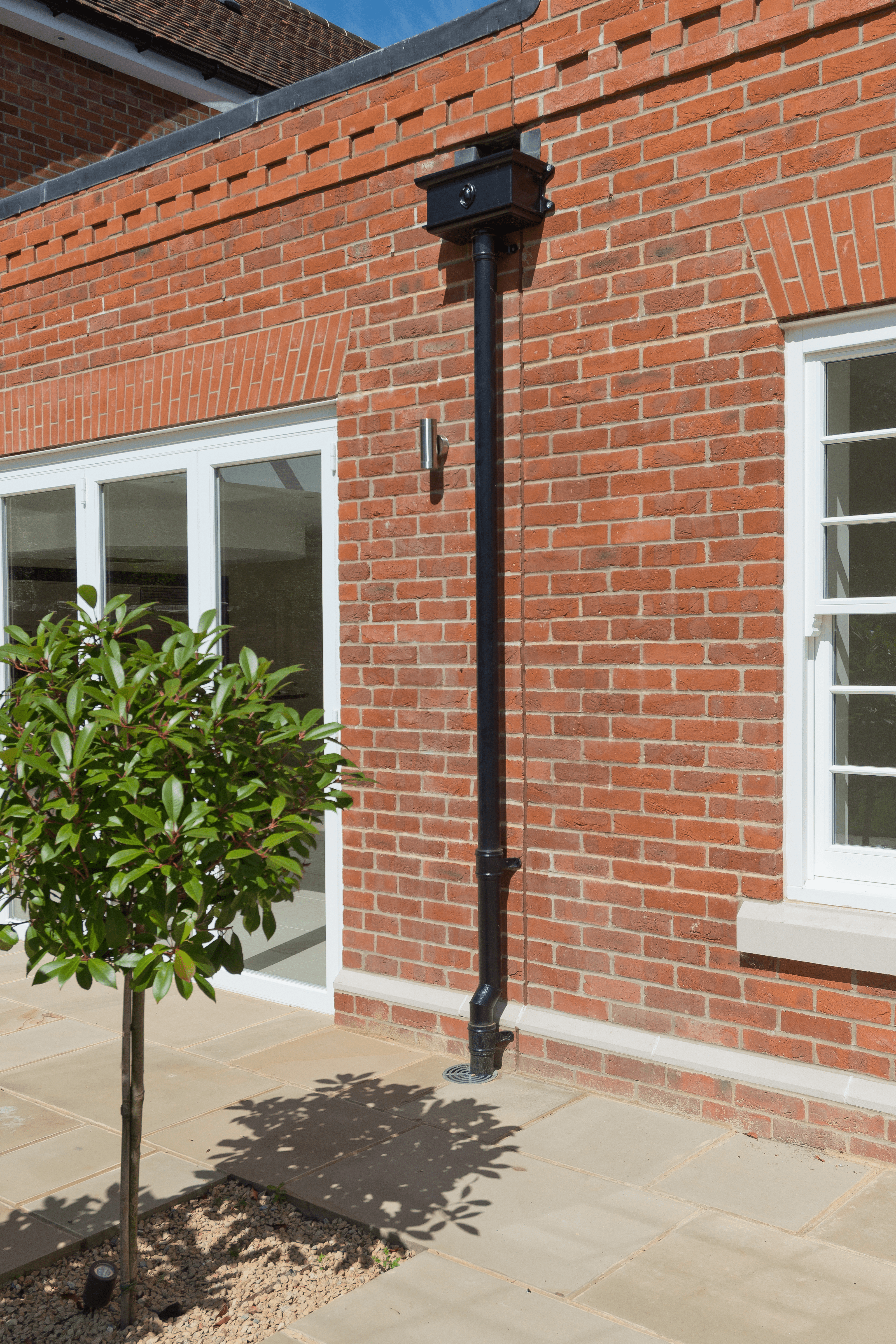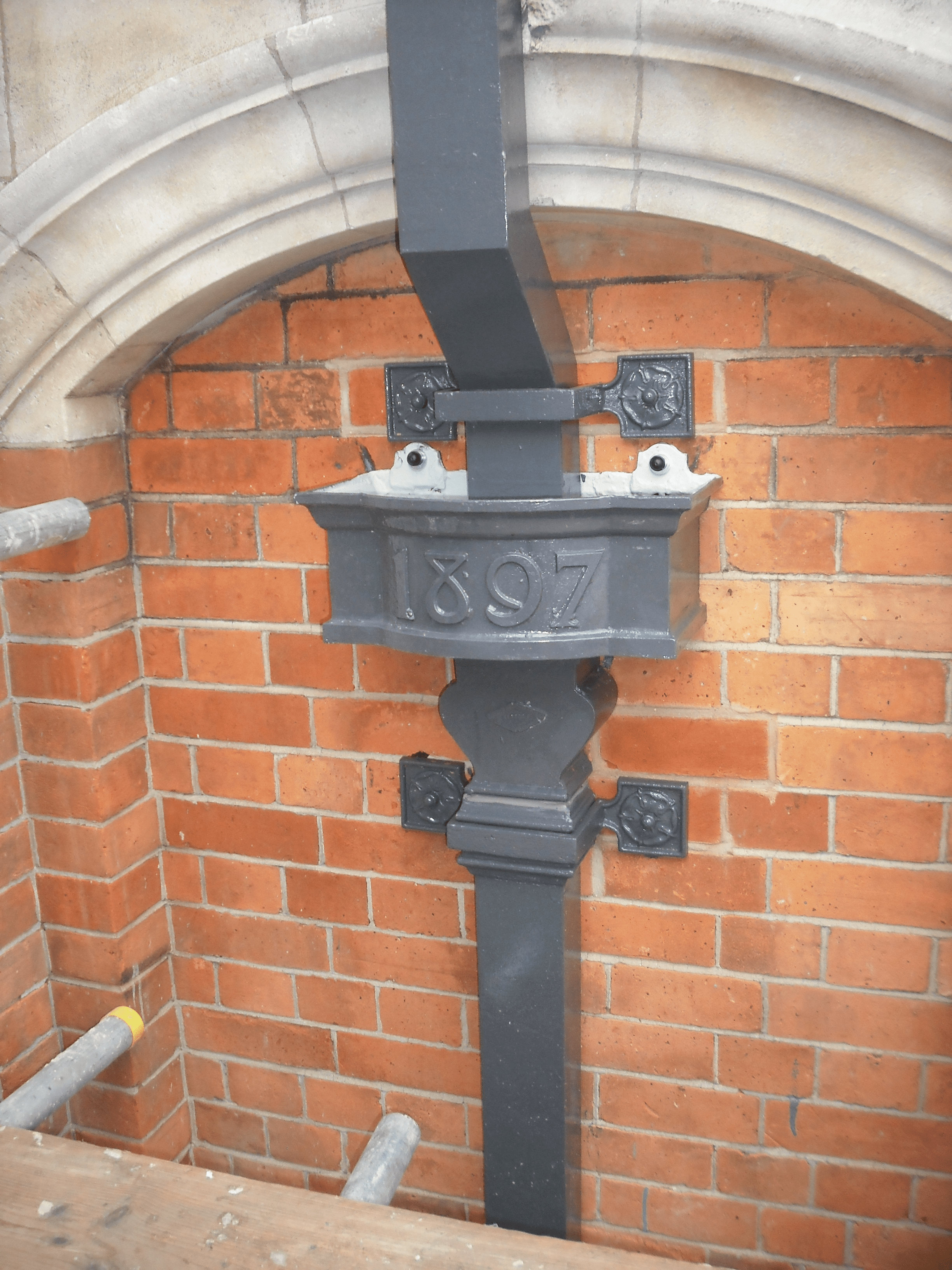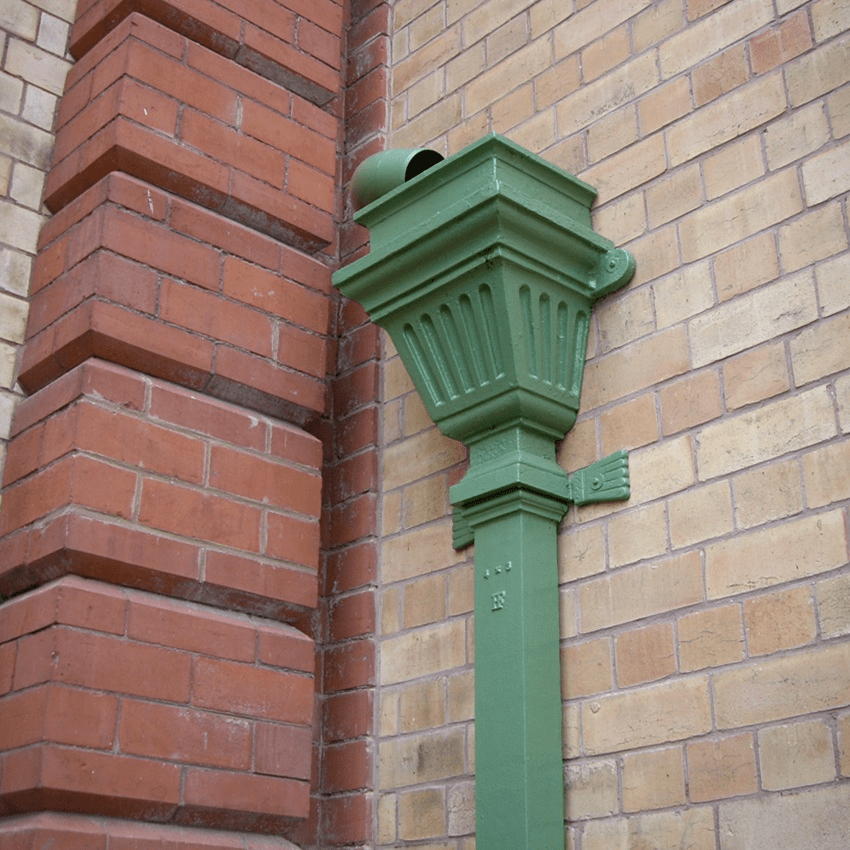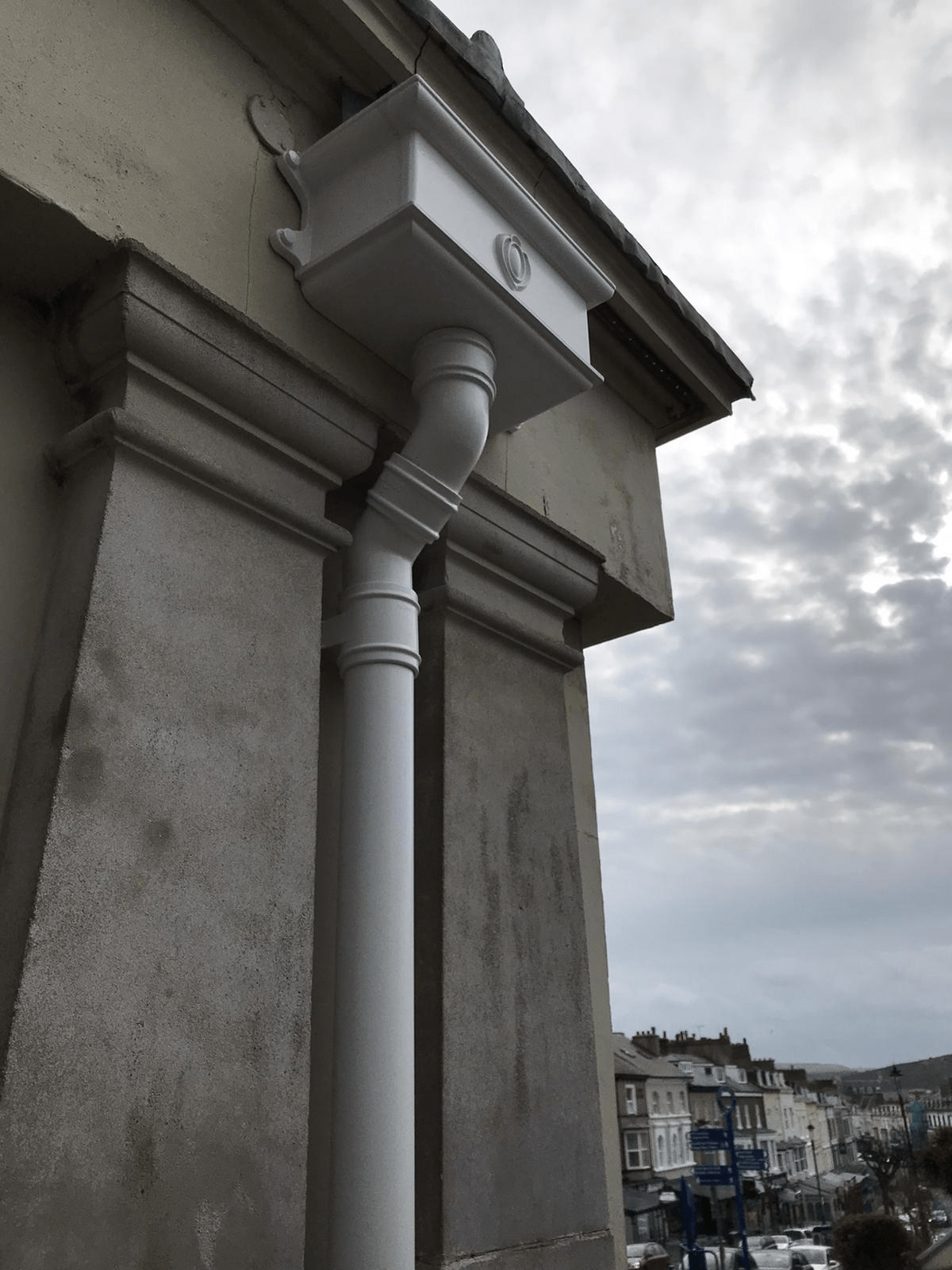
When it comes to protecting a building from water damage, a rainwater hopper plays a more significant role than many realise. In the UK, where unpredictable downpours, driving rain, and freeze-thaw cycles are part of the norm, choosing the right hopper head isn’t just about aesthetics; it's about functionality, durability, and long-term drainage performance.
Whether you're restoring a period property or designing a modern build, understanding how rainwater hoppers work, when to use them, and which materials are best suited for our climate can make all the difference. At Gutter Centre, we know the importance of marrying form and function, especially when it comes to drainage systems exposed to the elements all year round.

Why Rainwater Hoppers Matter for Drainage and Overflow Prevention
So, what are rain hoppers? Simply put, they’re open-headed containers installed at junctions in a rainwater system to manage the flow of water from gutters and multiple downpipes. They allow water to collect and drain more efficiently, reducing the risk of overflow in high-capacity systems.
In traditional settings, hopper heads are often used where multiple gutters or outlets converge, channelling water into a single downpipe. In modern builds, they’re also used to handle runoff from flat roofs or to manage decorative rain chains.
Aside from adding a touch of architectural character, their purpose is distinctly practical: to improve the performance of drainage systems and prevent water-related damage.
When to use a rainwater hopper? Generally, they’re recommended in areas prone to excessive runoff or where multiple water sources converge, common in large or complex roof designs. They’re also ideal in areas where there’s a risk of blockage or flooding, offering a buffer zone to slow and control water before it enters the downpipe.
Common UK Weather Challenges
The UK's climate presents a unique set of challenges when designing effective rainwater drainage systems. Sudden downpours can quickly overwhelm a standard gutter and downpipe setup, leading to overflow and water pooling at the base of buildings. Over time, this can result in issues such as rising damp, masonry damage, and even foundation problems.
Freeze-thaw cycles pose another concern. Water trapped in pipes or hoppers can freeze, expand, and eventually cause cracks or deformation in materials that aren't up to the task. That’s why selecting the right material is key not just for longevity but for ongoing performance.
Moreover, with rainfall patterns becoming more erratic due to climate change, drainage systems must now handle greater volumes of water in shorter periods. This makes the role of hopper heads more critical than ever.
What Makes a Hopper Effective in UK Conditions?
A good hopper does more than just catch and funnel water. It needs to:
- Withstand heavy rainfall without overflowing
- Resist corrosion and environmental damage
- Maintain structural integrity in freeze-thaw conditions
- Blend with the building’s architectural style
- Be easy to maintain or replace if required
For UK conditions, the hopper’s ability to resist water damage and adapt to variable temperatures is paramount. Equally important is how it integrates into the broader drainage design. Choosing the right size and shape will ensure that water is directed away from your property, effectively helping to prevent erosion, basement flooding, and costly repairs.

Material Comparison: Aluminium vs Cast Iron
Let’s explore the two most popular materials used in rainwater hopper manufacturing and what they offer to UK homeowners and contractors.
Aluminium
Aluminium hoppers are becoming increasingly popular for contemporary and commercial buildings.
Their key benefits include:
- Lightweight: Easy to install, especially in hard-to-reach places.
- Non-corrosive: Naturally resistant to rust, even in coastal or damp environments.
- Low maintenance: Requires minimal upkeep compared to other metals.
- Sleek appearance: Aluminium hoppers are made to measure, ideal for handling large water volumes or fitting tight spaces with precision. They can be powder-coated in any RAL colour, allowing you to match them perfectly with your doors, windows, or existing fixtures. This is a key reason many customers choose aluminium.
For new builds or extensions with a minimalist design, aluminium hopper heads offer both performance and aesthetic appeal. Their lightweight nature also makes them ideal for retrofits where structural load needs to be kept to a minimum.
Cast Iron
For traditional or listed properties, cast iron hoppers remains a trusted material. Its benefits include:
- Timeless appearance: Often required for heritage applications due to its classic look.
- Durability: With the right maintenance, cast iron hoppers can last well over a century.
- Robustness: Ideal for areas where the system might be subjected to physical impact or debris.
- Thermal stability: Handles freeze-thaw cycles well when installed correctly.
Cast iron is heavier and requires a more skilled installation, but the payoff is a long-lasting and authentic appearance that complements period homes beautifully. Gutter Centre supplies primed and painted options, making it easy to match any architectural scheme.

Profile & Style Considerations
While the material ensures durability, the profile of your rainwater hopper determines how effectively it performs and how it looks on your building.
Standard Square and Rectangular Hoppers
These are versatile and suit a variety of properties. Their clean lines make them popular for both modern and classic homes. They often feature decorative motifs or cresting, especially in cast iron designs.
Tapered or Ogee Profiles
These offer a more decorative, Victorian-era feel. Tapered hoppers are particularly good at directing flow efficiently, while ogee shapes match traditional guttering profiles found on heritage buildings.
Decorative Hopper Heads
For heritage projects or period properties, many homeowners choose ornamental cast iron hopper heads featuring intricate detailing. These not only perform a practical function but also enhance the building’s exterior with a distinctive, characterful finish.
Size Matters
Bigger isn't always better. The size of the hopper should correspond to the volume of water it’s expected to manage. Oversizing can sometimes lead to water stagnation, while undersizing increases the risk of overflow.
At Gutter Centre, we offer a wide range of hopper profiles to suit all building types, whether you're after a clean, contemporary finish or something more ornamental to preserve historical integrity.

Choosing the Right Hopper for Your Project
When selecting a rainwater hopper, consider the following:
- Material Compatibility: Ensure your hopper is compatible with the rest of your guttering system to avoid corrosion caused by metal interactions.
- Roof Size and Pitch: A steeper or larger roof collects more rainwater so you may need a larger or more specialised hopper.
- Downpipe Location: If multiple downpipes converge, a hopper helps manage this junction effectively.
- Visual Impact: Choose a profile and finish that complements your property’s style.
Selecting the Ideal Hopper for UK Conditions
In the UK, where weather extremes are becoming more common, having an effective rainwater management system is essential. Rainwater hoppers not only reduce the risk of overflow and damage but also add visual appeal to your property. With the right material and design, they can stand the test of time functionally and aesthetically.
Whether you’re undertaking a renovation, extension, or new build, Gutter Centre offers a wide selection of aluminium and cast iron hopper heads tailored to meet UK weather demands. Our expert team is here to help you choose the right solution for your drainage project, balancing performance with style.
Browse our full range today or get in touch for specialist advice tailored to your build.
